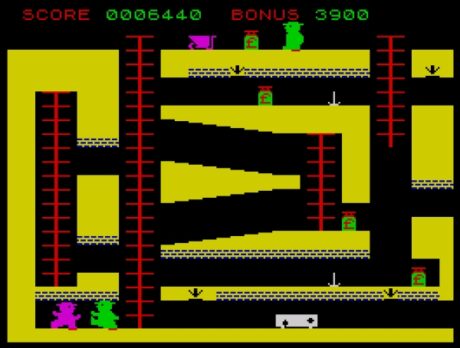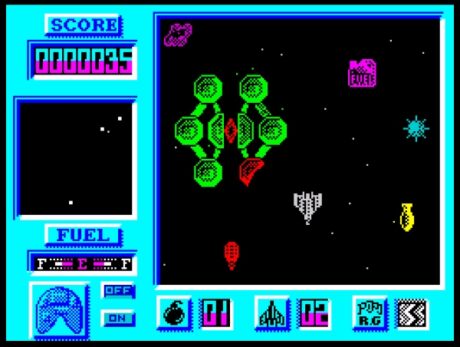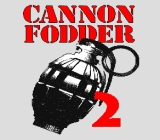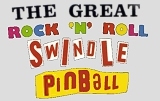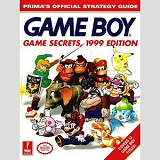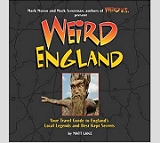The Speccy Arcade 100 (Part 3)
Part 1 (100-81), Part 2 (80-61), Part 3 (below, 60-41), Part 4 (40-21), Part 5 (20-1)
60. PANG
Arcade: 1989, Mitchell Corporation
Spectrum: 1990, Ocean
Look, nobody’s more surprised than me.
I was expecting this to be challenging for the top 10. The triumphant Arkanoid-style updated return to the Speccy of the arcade game that started out years earlier as Bubble Buster/Cannon Ball has it all – the graphics, the music, all the levels, even a decent splash of colour.
But going back and playing it now, the slight lag in response when you fire off your harpoon is SO jarring that it constantly gets in the way of the enjoyment and you never get fully used to it. (If you look closely, the harpoon in the arcade effectively starts at the muzzle of your gun while the Speccy one starts at your feet. That fraction of a second makes all the difference.)
It’s not enough to totally ruin everything else the port gets right, but it’s like being given the Royal box at the World Cup final and then having Keith Lemon take the seat next to you and talk incessantly, in character, from the kick-off to the final whistle. You wouldn’t leave – it’d still be the World Cup final, after all – but it wouldn’t half take the shine off it.
——————————————————
59. SHINOBI
Arcade: 1987, Sega
Spectrum: 1989, Virgin
Shinobi is one of Sega’s iconic arcade products, spawning a long line of sequels across more than 20 years and making all sorts of cameo appearances in other games. It’s easy to see why – it’s a fast, slick and accessible action platformer with lots of eye-catching moments.
The Speccy version, bewilderingly, scraped an average review score of just 69.8%, at a time when things like the stupendously terrible conversions of Jail Break and Nemesis were averaging almost 75% and 80% respectively. I mean, what did people want?
Binary Design’s port for the Speccy is speedy, colourful, responsive, has the arcade music in 128K mode, proper scrolling rather than push-scrolling, and features all the stages including the 3D bonus rounds. It’s a hugely accomplished bit of coding that’s fun to play as well as technically admirable. (It’s hugely better than the broadly-similar and equally-colourful Vigilante, say, which also got higher scores.)
The only flaws in Shinobi are the unnecessarily fiddly “big jump” control (there are only ever two heights, so why not make it a toggle instead of having you faff around pressing two keys?), and the fact that the screen is a bit zoomed-in and you don’t get any clues about what’s on the level above or below you – even when you can actually see the floor it doesn’t show you the feet of the enemies that are in fact standing there – so you have to make an occasional leap in the dark in a couple of stages.
Those merit docking a few points, sure, but only from what should otherwise have been nailed-on 90%+s all round. (Rick Dangerous is ALL leaps in the dark but still managed an 80% review average.)
Compiling this chart has made me realise just how amazingly, shockingly bad most Spectrum-magazine game reviewing actually was – in the same issue of YS that gave Shinobi 71%, Altered Beast got 80% and the monochrome mediocrity of Strider got a ridiculous 90% – but never more so than with the absolutely gross injustices done to this superb port.
—
HONOURABLE MENTION: On a similar ninja theme, I love Irem’s all-action Ninja Spirit in the arcades and the Speccy port is half-decent, but its refusal to compromise on the highly-detailed graphics while remaining totally monochrome makes it absurdly hard to make progress in compared to the likes of Shinobi. A bit less ambition could have made it a real contender.
——————————————————
58. GRYZOR (aka Contra)
Arcade: 1987, Konami
Spectrum: 1987, Imagine
Gryzor is one of the games that definitely benefits from this chart’s eligibility rules. It was a little bit of a handful back in the day, whether with keyboard or joystick controls, because needing six keys or two fire buttons at a time when joysticks only had one is a serious handicap in a game as famously unforgiving as Konami’s run’n’gun platformer.
The Speccy conversion makes a few compromises, but difficulty isn’t one of them. The graphics are stripped down somewhat for visibility (but still highly recognisable as the coin-op, and with plenty of colour), there are some weird quirks (you can’t go backwards in the horizontally-scrolling stages) and some sections have been made easier (like the first “boss” emplacement, which just sits passively waiting to be shot), but mostly this is still a very tough game.
There are no missing stages here, unlike many Speccy arcade ports of the time, and although the game’s been simplified quite a bit you only get one credit with six lives. So it’s a real godsend to be able to program a modern multi-button joystick or gamepad and give yourself a fighting chance at getting to the end.
The 8-bit conversions of Gryzor are all radically different from each other. The C64’s is comically, drawn-by-a-toddler-with-finger-paints ugly and too fast, while the Amstrad port looks fantastic and is the most accurate of the three, but the heavy price of prettiness is the loss of the music present in the other two, and the fact that it’s (madly) a flick-screen game rather than a scrolling one. (Bad in the horizontal stages, ruinously awful in the vertical one.) Overall I reckon the Speccy got the best deal.
——————————————————
57. DRAGON SPIRIT
Arcade: 1987, Namco
Spectrum: 1989, Domark
In mid-80s arcades where every other cabinet was a vertically-scrolling shooter, Dragon Spirit really struggled to stand out. (Its own 1990 sequel Dragon Saber was a far better game.)
But the Speccy field for the genre was a lot less crowded (perhaps because the landscape-format screen was much more suited to side-scrollers), so for keen Spectrum shmuppers the conversion, led by prolific veteran coder Christian Urquhart, was a much more attractive prospect than it was to spoiled arcadegoers.
And it’s a really good job. While mostly monochrome (it does admirably get some colour in where it can, like the river on stage 1), visibility is high thanks to big masked bullets and a very respectable framerate, and difficulty is pretty well pitched – the graphics are relatively bigger than the coin-op’s and there’s no horizontal scrolling, so the action is more intense and most of your shots hit something.
Dragon Spirit is one of the games in this list that emulation is the making of – it’s a pain in the arse with keys or a one-button joystick, because you need to bomb constantly, but when you can map buttons to an arcade stick or joypad it radically transforms it into a far more enjoyable experience.
(Autofire would have been nice, but remember that Speccy coders all hate you and want the main test of your gaming skill to be how strong your thumb muscles are.)
—
HONOURABLE MENTIONS: Sonic Boom is a pretty decent stab at the coin-op and unusually smooth for a Speccy port. (Get the 2021 edition that gets rid of the nasty crackly sound.)
Gemini Wing takes the opposite approach, sacrificing framerate for more colour, but is still very playable.
——————————————————
56. ELEVATOR ACTION
Arcade: 1983, Taito
Spectrum: 1987, Quicksilva
Taito’s much-ported cult spy hit was one of the cutest-looking coin-ops of its era, and with its real-world location and non-linear play it was arguably also one of the first germs of the idea of the “sandbox” game.
This chart’s seen a lot of Speccy ports so far with lazy 128K versions that didn’t bother to include any music, so Elevator Action is a big gust of fresh air.
In fact the Speccy music is BETTER than the arcade game’s, offering a much bouncier tune. It’s also a fantastic-looking port, with really nice graphics and tons of colour with minimal clashing. (It knocks the C64 version into a cocked hat visually, it’s smoother than the MSX or CPC versions and it’s prettier than even the NES port. In fact, I think it’s fair to say that overall it’s the handsomest Elevator Action money could buy until the arcade sequel and the Game Boy Advance remake.)
Like its coin-op daddy the Speccy game could probably do with a smidge more speed, but it’s hardly fair to criticise an arcade port for not being faster than the original. Elevator Action wasn’t the greatest arcade game in the world, but if you loved it and wanted to take it home you really couldn’t ask any more from a Spectrum conversion of it than this. It’s very near to flawless.
—
SECRET MENTION: Mission Elevator, a 1988 release from Kixx, looks for all the world like an unofficial port of Elevator Action, but actually turns it into an odd little arcade adventure. The whole thing appears to be set in a single 63-storey skyscraper hotel in which you’re constantly examining plants and barging into the rooms of voluptuous ladies, ostensibly while searching for keys and parts of a code to defuse a bomb.
——————————————————
55. MR HELI REMASTERED (128K)
Arcade: 1987, Irem
Spectrum: 2014, Rafal Miazga (1989, Firebird)
Irem’s Mr Heli is one of those arcade games where so much of its appeal is in the bright colourful graphics and jaunty music that bringing it successfully to the Spectrum almost seems like a hopeless task.
Firebird’s original conversion did a decent job of replicating the gameplay, but with no music and ugly stipply monochrome graphics it was left with only what’s actually quite a forbiddingly difficult game. Suddenly it was less Budgie The Helicopter’s Happy Fun-Time Adventure, more (Yellow And) Black Hawk Down.
So it’s hard to overstate the change effected by Rafal Miazga’s superb remaster.
This is a completely transformational hack. With an excellent AY rendition of the coin-op music and much cleaner, sharper graphics, the mod version steps away from the grim military vibe and as if by magic we’re back at the cheery, cartoony arcade game again, just played on a slightly broken monitor. As to why it was ever drawn with the uggo graphics in the first place when it could just as easily have looked like this, that’s a mystery for the ages.
—
HONOURABLE MENTION: Pac-Land Reimagined. Grandslam’s port of the strange Pac-Man sequel wasn’t bad and especially benefitted from having an excellent rendition of the coin-op music included, but the atmosphere was somewhat spoiled by the glum monochrome palette. Miazga said “to hell with colour clash” and just colourised the whole damn thing, which made it feel twice as much like the arcade game.
——————————————————
54. BUGGY BOY (128K)
Arcade: 1985, Tatsumi
Spectrum: 1988, Elite
PEDANTRY FACT: the Spectrum in fact never got a conversion of Buggy Boy. Buggy Boy was an arcade game whose main selling point was its spectacular triple-screen display with epic draw distances, and very few Spectrum games were ever released which allowed people to connect three TVs together for widescreen play.
What we actually got was the cut-down single-screened Buggy Boy Jr:
But in fairness we got a pretty impressive version of it.
Neither of the other 8-bit ports had anything like the ambition of the Speccy version. The C64 game, while superb, zoomed way back until the trademark giant colourful buggy of the coin-op was a tiny little thing, and the less said about the stinky Amstrad CPC effort the better.
But the Spectrum release tackled the daunting task of replicating the fast, sprite-scaling original head-on, and came out on the other side with one of the best-looking racers ever seen on the machine. In fact, it made the buggy even BIGGER, to the extent that sometimes you just can’t see where you’re going, which is unfortunate.
(The problem is exacerbated by its bouncy gait, something probably done to enhance the feeling of speed, and especially in downhill sections.)
Various other compromises were made too – you don’t get the bonus footballs, the colour-coded flag collection or the banked sections of track (which is a bit weird as they DID go to the trouble of coding in graphics for when the buggy’s tilted at a 45-degree angle), and the collision detection can be somewhat opaque, but none of that stops the port from feeling more like arcade Buggy Boy than anyone would ever have dared to dream.
This is a game like no other on the Speccy, and showcases just what the old machine could do if someone really put their minds to it.
——————————————————
53. GILLIGAN’S GOLD (Bagman)
Arcade: 1982, Valadon Automation
Spectrum: 1984, Ocean
This game might be completely unique, in that it’s a 48K Spectrum port of an arcade game where the Speccy version has continuous ingame music and the arcade doesn’t.
Valadon’s 1982 mine-robbing romp is one of the most absurdly, ferociously hard games ever to hit an arcade.
Even the more enjoyable hacked version where you can run twice as fast at the touch of a button (Bagman Turbo) is still absolutely savage. And in fact, Gilligan’s Gold is more like a conversion of Bagman Turbo than the original – it picks up the pace noticeably, and is all the more playable (though barely any easier) for it.
It also helps speedwise that the screen is squished down from the arcade’s portrait format to the Speccy’s landscape one, while still including all the “floors” of the mine.
(Trivia fact: it was only after watching some YouTube videos for this chart that I discovered Gilligan’s Gold actually changes colours in the second level, having never managed to get that far before. Round 2’s colours are actually much more arcade-like, so I wonder why they didn’t start with those. Even in 1984 I think everyone knew that just changing the colours in your unlicensed ripoff didn’t offer you any legal protection.)
Gilligan’s Gold is basically a better Bagman than Bagman in nearly every respect, with only the overly pernickety collision detection on picking up money bags and dropping them in the wheelbarrow spoiling the party a bit. Just don’t expect an easy time.
——————————————————
52. POWER DRIFT (128K)
Arcade: 1988, Sega
Spectrum: 1989, Activision
I really couldn’t make my mind up about this one. It’s based on a really fun and characterful Sega coin-op that’s basically a cross between Super Mario Kart and Stunt Car Racer done on an upgraded version of the firm’s iconic mid-80s sprite-scaling hardware that also brought you Out Run, After Burner and Space Harrier.
In most respects the Speccy port is a triumph – it’s fast, with a decent framerate and responsive control, and includes all the arcade’s 25 tracks complete with all their spectacular rollercoaster ups and downs and twists and turns. It also doesn’t compromise on difficulty – just like the coin-op you’ll really struggle for a podium spot if you have even a single serious shunt on anything but the first track in any of the five race series.
The audio, however, is the cat poop in the Coco Pops. The 48K version has none at all – not a single beep or click – and the 128’s is all over the shop. Seemingly at random it’ll switch from music or sound effects to neither or both, between races or after a crash or just whenever it feels like it. And if you’re not in 1st position in a race, the sound cuts out completely as soon as the leader crosses the finish line until the rest of the field trails in, which is disconcerting and distracting.
The phrase “[Game X] would have placed a lot higher if not for [Y]” is becoming a familiar refrain in this list, but Power Drift’s audio really lets down an otherwise superb port that didn’t even need multiload to cram everything in, and definitely dumps it from the top half of the table to the bottom half.
——————————————————
51. SOLOMON’S KEY
Arcade: 1986, Tecmo
Spectrum: 1987, US Gold
You don’t get all that many sandboxy action puzzle games in arcades, and the ones there are don’t tend to be huge hits.
So when US Gold ported Solomon’s Key to the Speccy, hardly anyone (a) had ever heard of it, or (b) appreciated what a splendid job Probe had done of it. I actually prefer the colour scheme of the Speccy version (limited as it is), and it plays identically.
So it was really disappointing when it suddenly just ran out. To fit it into 48K you got a pretty measly 17 levels out of the arcade’s 44 (which for any C64 owners reading is less than half), and at a time when 128K and multiloads were commonplace it seems like some serious cheapskatery.
(How much effort could it have been to get the rest of the levels in by one of those methods? They’re already designed for you and the game code is already written, the amount of extra time/work seems pretty minimal.)
Now, most people never get near completing most games, and Solomon’s Key gets pretty challenging pretty fast. With only six lives and no continues, the vast majority of players would never even know that 60% of the levels are missing (or indeed anything beyond about stage 4). But I know, so an otherwise near-flawless port of an excellent game finds itself at a relatively humble No.51 and that’s just how things are sometimes.
——————————————————
50. MOTOS
Arcade: 1985, Namco
Spectrum: 1987, MAD
Namco’s game of intergalactic bumper cars certainly looks like the kind of thing that would be pretty achievable on the Speccy.
And sure enough, Binary Design’s port – remarkably released on a £2.99 budget label – is an extremely complete conversion. The screen is a little smaller (11×11 rather than the portrait-mode coin-op’s 13×14) but the speed is reduced a little to compensate. All the features and baddies are there, it’s got 62 levels (although they’re not all the same as the arcade ones) and it’s brightly-coloured with the proper 128K music. (48K sound is minimal but adequate.)
It seems like one of those cases where the coders were just given a loan of an arcade machine or a video of it and left to figure stuff out for themselves, though, rather than being given the proper design documents, because on closer inspection there are several enemies and objects which behave quite differently to their coin-op contemporaries.
But none of that changes the fact that this FEELS just like playing arcade Motos, and it’s just as tough as its big brother. Neither the original nor the Speccy port offers any continues, so clearing either without cheats is a serious long-term challenge, and nudging your highscore up a little at a time on the way is its own reward.
——————————————————
49. ROUST (Joust)
Arcade: 1982, Williams
Spectrum: 2018, Allan Turvey
For several years Winged Warlords by CDS, from the very early days of the Speccy, was the best take on Williams’ ostrich-unseating medieval melee the machine had to offer.
Despite being a stripped-down version that plays as one continuous level with no disintegrating platforms or special waves, it squeezed some excellent fast-paced Joust action with lovely smooth physics and control into the 16K machine.
Nearly three decades later, though, someone decided it was time to do the job properly.
Roust restores all the missing features from the coin-op in a terrific port with authentic graphics and 128K sound. Only the slightly skittish movement/control – which isn’t as pleasing or precise as that of Winged Warlords – disappoints a bit, but the tradeoff of a fully-featured Joust more than makes up for it.
—
HONOURABLE MENTIONS: Crazy Cars, a very obscure 1985 title from Denmark (although it has speech in a very Scottish accent), is a splendid and fast port which inexplicably switches the ostriches for fairground bumper cars – I suppose, in fairness, ostriches can’t actually fly either – but has all of the arcade’s features except for the lava troll, and is let down only by the occasional AI flaw like baddies sometimes getting stuck on the centre-right platform. Other than that it would have given Roust a serious challenge for the slot.
—————————————————————-
48. ROAD BLASTERS (128K version)
Arcade: 1987, Atari
Spectrum: 1988, US Gold
I have a special place in my heart for Road Blasters, because the Speccy version is the game I mostly won the 1989 UK Computer Games Championships on. But it’s interesting for more reasons than that.
One is that on the Speccy the 48K and 128K versions are so radically unalike that they’re practically different games. The 48K version is pretty rancid, in fact – ugly and heavily cut-down, lacking any sort of front end or basic features like the starting-level select.
The 128K version, though, is far prettier and slicker.
But another thing is that by being slower and lacking the coin-op’s fancy analogue controller, the Speccy port of Road Blasters actually plays better than any of the 16-bit ports and arguably even better than its arcade parent. From being a frantic semi-controllable rollercoaster, the conversion turns it into more of a game of skill and shooting precision, where the key is to take down enemy cars and gun turrets without wasting any bullets (each miss lowers your score multiplier, you see).
It also, incidentally, CRUSHES the hideous C64 version visually – although we should acknowledge that the Amstrad port is an absolute stunner to look at and only plays fractionally less well than the Speccy one.
This is another of those games, like SDI, that feels more like the arcade experience than it strictly is. Your brain just sort of adjusts to the changes and tells you that this is Spectrum Road Blasters rather than the arcade game, and that somehow that’s okay.
——————————————————
47. IKARI WARRIORS
Arcade: 1986, SNK
Spectrum: 1988, Elite
Whoever invented the rotary-fire concept in arcade games really needs a slap. Offhand I can’t think of a single game (okay, maybe Tron) where it adds anything to the experience, and in fact it’s almost always a giant pain in the arse even in the original, let alone for the poor saps trying to translate such a fiddly and dedicated control method to the simple keyboards and joysticks of home micros.
And so it was with Ikari Warriors.
But like a few of the games in this list, necessity was the mother of improvement when it came to the Speccy port. Without adding any extra controls – you still had movement and two buttons – the home version played better than its big brother, thanks to mapping grenades to a long press and a clever toggle which either locked your direction of fire or let you shoot Commando-style in the direction of movement.
It’s a terrific conversion, bursting with colour and with very little from the coin-op missing or simplified, though it’s a real shame we never got a 128K version with music, either officially or as a hack. That and the pointlessly annoying limited ammo for your gun – the arcade game’s fault, of course – and the minor problems with bullet visibility in some areas are the only reasons why it doesn’t place even higher. It’s also a game that plays even better with modern controls than it did back in the day, so if you enjoyed it then, enjoy it even more now.
—
HONOURABLE MENTIONS: The arcade sequel Victory Road got an equally good conversion with the same engine. (The related SNK titles Guerrilla War and Tank fared rather less well, and showed how basically the same controls could also be adapted very badly.)
——————————————————
46. TIMEBOMB – ARCADE EDITION (Check Man)
Arcade: 1982, Zilec-Zenitone
Spectrum: 1984, CDS Microsystems
We’ve touched on the slightly odd story of Check Man before, and not just in relation to its possible connection to Ultimate. Its arcade flyers depicted a game with a playfield of blue tiles, but every known emulated version has yellow ones, as did the real-life one I played in my local arcade in the early 80s.
Whether the original Timebomb had blue ones in tribute to the flyer version is anyone’s guess, but lucky Spectrum owners now have a choice, since Hungary’s own tireless Pgyuri has modded up a version with the colours of the real one that appeared in arcades.
(I’m really fascinated to see if a blue arcade ROMset ever shows up.)
As for gameplay, CDS’s conversion was a bit of a triumph – fast and true to the original with a challenging difficulty curve and a real sense of urgency. It had a lot of competition on the Speccy – Check Man probably vies with Pengo for the highest number of clones of one arcade game on the machine – but for my money it’s the champ.
—
HONOURABLE MENTIONS: There were LOADS of Speccy clones of Check Man, and many of them are good in various ways (there were even a couple of highly respectable magazine type-in versions). Chocman and De-Fusion don’t quite make the podium, but Stomp by Omega is almost as good as Timebomb overall and visually probably better, and only lost out because of its lack of music and slightly odd take on the row-shifting power.
Grid Trap from Livewire is also very decent and has music but again doesn’t handle the row-shift quite as elegantly as Timebomb (although mappable controls under emulation help with that). Any one of them will do a fine job, but Timebomb is just narrowly the best all round.
——————————————————
45. ALIEN SYNDROME
Arcade: 1987, Sega
Spectrum: 1988, ACE
This chart has marked some games down quite harshly for (a) push-scrolling and (b) failing to make use of the features of the 128K Speccy. But while those are both disappointing shortcomings, they’re not total dealbreakers, and here’s a case in point.
Sega’s splattery space rescue with hints of Gauntlet is a classic of its era, and the Spectrum conversion is an instantly recognisable and likeable recreation with cute, colourful graphics and accurate maps.
Would it have been better with constant scrolling? Probably, but as it moves in blocks to avoid colour clash it would have either had to be significantly less pretty or have given players motion sickness. The push-scrolling is well-calibrated so that you almost never scroll straight into a baddie, and you fairly quickly stop even noticing it.
The lack of 128K sound and music is harder to excuse, especially in a game that’s a multiload anyway, and the same goes for the two missing levels from the arcade’s six (you get all the spaceshippy levels but not the alien-planet ones). You’re getting plenty of Alien Syndrome fun for your money here, though, and you won’t feel too short-changed.
——————————————————
44. TERRAPINS (Turtles/Turpin/600) (128K)
Arcade: 1981, Konami/Stern/Sega
Spectrum: 2017, Allan Turvey
Although my opinions are of course at all times objective and definitive, if pressed while drunk at a party or something I’ll secretly admit that my personal favourite coin-ops enjoy a high level of representation in this chart, and Turtles/Turpin/Terrapins is a case in point.
It’s a game I only encountered once in the wild (the Turpin version in the long-gone Purple Penny arcade on the promenade in Southport, local colour fans) but which made a big impression on me with its bouncy music and cute-but-intense maze-chasing gameplay.
It’s actually a game with a really fascinating history. Despite being little-known now and not very successful in its day, it had several different coin-op incarnations spread between three of the big-name publishers of the time, which featured quite radical gameplay differences as well as aesthetic ones.
The original Konami release, for example, was actually called 600, had racecars as the enemies – presumably on a sort of Frogger theme – rather than beetles, and played the same music the whole way through. Turtles, the Stern licence, had four tunes which changed each level, while Sega’s version, Turpin, had EIGHT different melodies and changed them with every two turtle babies rescued.
In 600 you also rescued all the babies at once rather than one at a time and your bombs recharged automatically over time instead of having to be collected from the centre of the maze.
It got even weirder with a whole raft of official ports for various obscure home formats ranging from VCS-era stuff like the Philips Videopac G7000 and Emerson Arcadia to the Tomy Tutor educational console and the Casio PV1000, in which the screen layouts, graphics and game rules got overhauled yet again. Turtles was even one of the only four games ever released for Entex’s bizarre spinning-mirrors standalone console the AdventureVision.
Strangely, though, despite looking like ripe fodder for budding coders to cut their teeth on knockoffs of, it was a game of which there appear to be very few unofficial clones. Compare and contrast with Bagman, released around the same time, which is an equally obscure and much less good game, but which got bootlegged faithfully on the Spectrum, C64, Amstrad CPC (all as Gilligan’s Gold – see #52), Dragon 32, Tandy Coco, Colecovision, C64 again (as Bagitman) and Amiga to name but eight releases.
As far as I can establish, the Speccy was one of the few formats to get any Turtles homages, in the shape of the quite playable Turtle Timewarp and a really rather impressive type-in from Your Computer called Terrapin (singular).
Neither had the cuteness or catchy music of the coin-op, though, which is where Allan Turvey’s splendid 2017 remake showed up.
It’s a really pretty and smooth clone with great use of colour, authentic level layouts and slick arcadey presentation. It plays beautifully and really evokes the original, even though it sadly doesn’t use any of the arcade music, preferring its own original tunes. It also dumbs down the difficulty a bit for my liking – it’s noticeably slower and you start with only two beetles in pursuit.
(I’ve never understood making Speccy ports EASIER than the arcade game. Keep them the same or even make them harder, because it doesn’t cost you 20p a go and there’s no queue of other people waiting to play and laughing at your incompetence. You’ve got all the time in the world to practice in the privacy of your own home and git gud, as the kids today say. Or just POKE it with a cheat if you’re irretrievably rubbish.)
I’m also gutted that the promised “Rally-X” game mode never materialised, as it looked like a lot of fun, but as the coin-op didn’t have one of those that’s very excessive nitpicking. Terrapins is an absolutely lovely Speccy version of Turpin and that should be enough for any reasonable person.
——————————————————
43. BATTLEZONE
Arcade: 1980, Atari
Spectrum: 1984, Quicksilva
57 entries in and we’re hitting the point where it’s difficult to think of things to say about some games. Everyone knows what Battlezone is, right?
Quicksilva’s first official arcade licence did a bang-up job of bringing the coin-op’s vector graphics to the Speccy’s pixel screen, bright and solid and impressively fast.
(Sorry, that crappy, wrong-aspect video seems to be the best one on YouTube.)
It also nailed the tank-tracks controls and some nicely gritty 48K sound, in what’s basically as flawless a port as the Speccy could possibly have been asked to deliver. And hey, we’ve all got busy lives to get on with, so let’s just leave it at that.
—
HONOURABLE MENTION: If you prefer a more colourful take on Battlezone, and with simpler joystick controls, 3D Tank Duel from Realtime – the game they cut their vector-graphics teeth on before Starstrike – was best in class before Quicksilva’s version came along, and will do you very nicely.
——————————————————
42. BOSCONIAN 87 (128K)
Arcade: 1981, Namco
Spectrum: 1987, Mastertronic
Nitpickers, or lovers of games that didn’t make the cut, could legitimately call for a steward’s inquiry on this one, because despite being billed on the inlay as an “OFFICIAL NAMCO ARCADE LICENSE” and “A classic conversion from the ever-popular arcade game”, there was never any such arcade game as Bosconian 87. What there was was plain old Bosconian (1981).
And the list of differences between Bosconian and Bosconian 87 is a long one.
For a start the colours are all wrong. The enemy fortresses in Bosconian are green and red and there’s no reason they couldn’t have been the same in the port, since the game scrolls in character blocks. It could just as easily have looked like this, ie lovely and actually like Bosconian:
But instead it’s mostly in black and white for no obvious reason. It’s also WAY more zoomed-in than the coin-op, with tons of the screen given up to a largely needless surround in unpleasant cyan. And the two-way fire that comes equipped with your ship as standard in arcade Bosconian now has to be found as a powerup here.
You don’t only lose things, though. Bosconian 87 has a whole raft of additions to the original arcade game – deadly space mines, smart bombs, extra-life pickups, extra-fuel pickups even though it’s almost impossible to run out of fuel, weird docking stations you can dock with to very little apparent purpose (they’re basically a wildly overcomplicated pause button), but mainly a catchy continuous tune with an especially fabulous end-of-level jingle that makes you want to keep playing just so you can hear it again.
(Unusually for the time, Bosconian had no music other than an intro fanfare.)
Essentially, then, what I’m saying is that this game is NOTHING LIKE BOSCONIAN. But of course it is, because the core shoot-the-fortresses gameplay is exactly the same and none of the other stuff really affects it in any very noticeable way. It’s loads of fun, unless you only have a 48K machine in which case drop it about 50 places because that jingle is EVERYTHING.
——————————————————
41. HUNCHBACK
Arcade: 1983, Century Electronics
Spectrum: 1984, Ocean
Generally held to be the Speccy’s first step into the respectable world of licenced arcade conversions rather than unofficial knockoffs with one letter in their name changed, Hunchback was an auspicious start.
(Ocean got value for money out of their licence, porting Hunchback to the C64, Amstrad, Dragon 32, BBC Micro and an especially good MSX version as well as the Spectrum. They also produced a home-micro sequel, a graphic adventure game and a totally original Game Boy title.)
There are actually about a dozen different versions of the coin-op, running on different hardware in a range of colour schemes and with various graphical, gameplay and audio differences, so it’s actually hard to be definitive about how accurate any conversion is. But they’re all broadly the same game.
The Spectrum port gives you all 15 stages of the castle wall to traverse to save Esmerelda, with the proper hazards on each one, all depicted in some large, un-Speccy-like graphics. On busy levels it plays better than the arcade game, lacking the slowdown that occasionally afflicted the primitive hardware.
The only things missing are the arcade intro sequence and the strange little platforming bonus level at the end, which actually showed up in the sequel Hunchback II – Quasimodo’s Revenge instead and always felt totally out of place in the coin-op anyway.
It’s a smashing conversion of a characterful and addictive game, and if you haven’t played it give it a try and see if it rings your bell. (I’m fired. – Me)
.
Part 1 (100-81), Part 2 (80-61), Part 3 (60-41), Part 4 (40-21), Part 5 (20-1)
